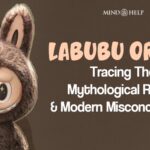Brain News: The new study published in Developmental Cognitive Neuroscience, finds that the brain’s organizational pathways might set a foundation for a child’s language learning abilities within the first year of life.
Researchers from Boston University studied dozens of babies (4-to-18-month-old) from 40 families over the course of five years. They closely monitored the link between babies’ brain development in infancy and a child’s long-term language skills and how much of their language development is influenced by their environment and upbringing. They took images of the infants’ brains using magnetic resonance imaging (MRI) and gathered first-of-its-kind data on white matter development.
After five years researchers met the children and their families again to assess each child’s emerging language abilities. Their assessments tested each one’s vocabulary knowledge, their ability to identify sounds within individual words, and their ability to blend individual sounds together to understand the word it makes.
The team found that the brain’s organizational pathways play a role in a child’s language learning abilities in the early years of life. These pathways, known as white matter, act as the connectors between the billions of neurons — called gray matter — that comprise the brain tissue. This allows for the exchange of signals and for all of the different tasks and functions we need to perform, as well as all of the biological processes that sustain us.
“A helpful metaphor often used is: white matter pathways are the ‘highways,’ and gray matter areas are the ‘destinations’,” says Jennifer Zuk, who led the study. The more a person is trying a particular task like learning a new language, the stronger and more refined the pathways become in the areas of the brain responsible for that task, allowing information to flow more efficiently through the white matter highways. According to Zuk, rapid white matter development occurs within the first two years of life.
As per findings children born with higher indications of white matter organization had better language skills five years later. The results indicate that foundation for language and communication skills could be established in infancy. “ongoing experience and exposure [to language] then builds upon this foundation to support a child’s ultimate outcomes,” Zuk says. She says this means that during the first year of a child’s life “there’s a real opportunity for more environmental exposure [to language] and to set children up for success in the long term.”
To Know More You May Refer To:
Zuk, J., Yu, X., Sanfilippo, J., Figuccio, M. J., Dunstan, J., Carruthers, C., Sideridis, G., Turesky, T. K., Gagoski, B., Grant, P. E., & Gaab, N. (2021). White matter in infancy is prospectively associated with language outcomes in kindergarten. Developmental Cognitive Neuroscience, 50, 100973. https://doi.org/10.1016/j.dcn.2021.100973







